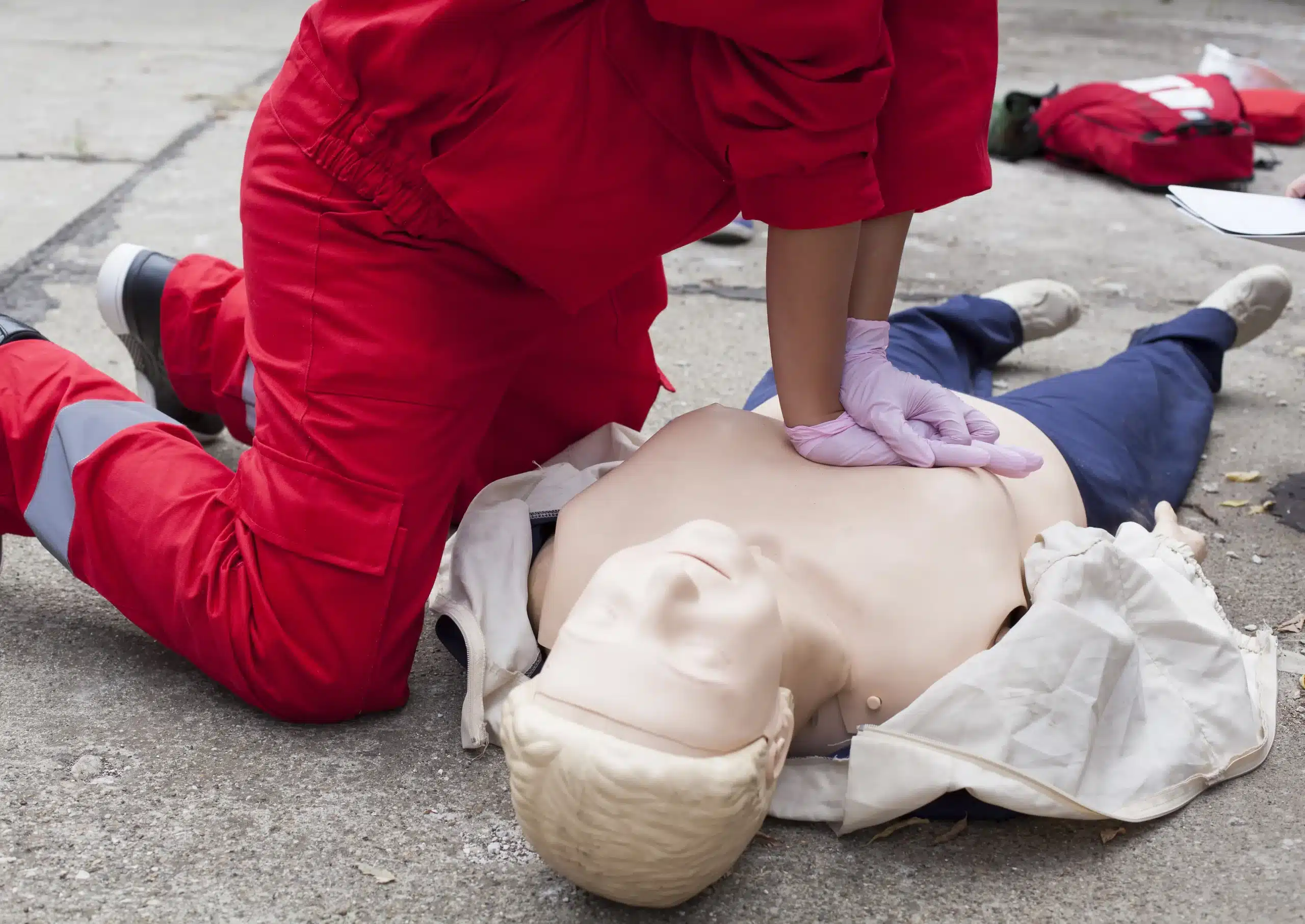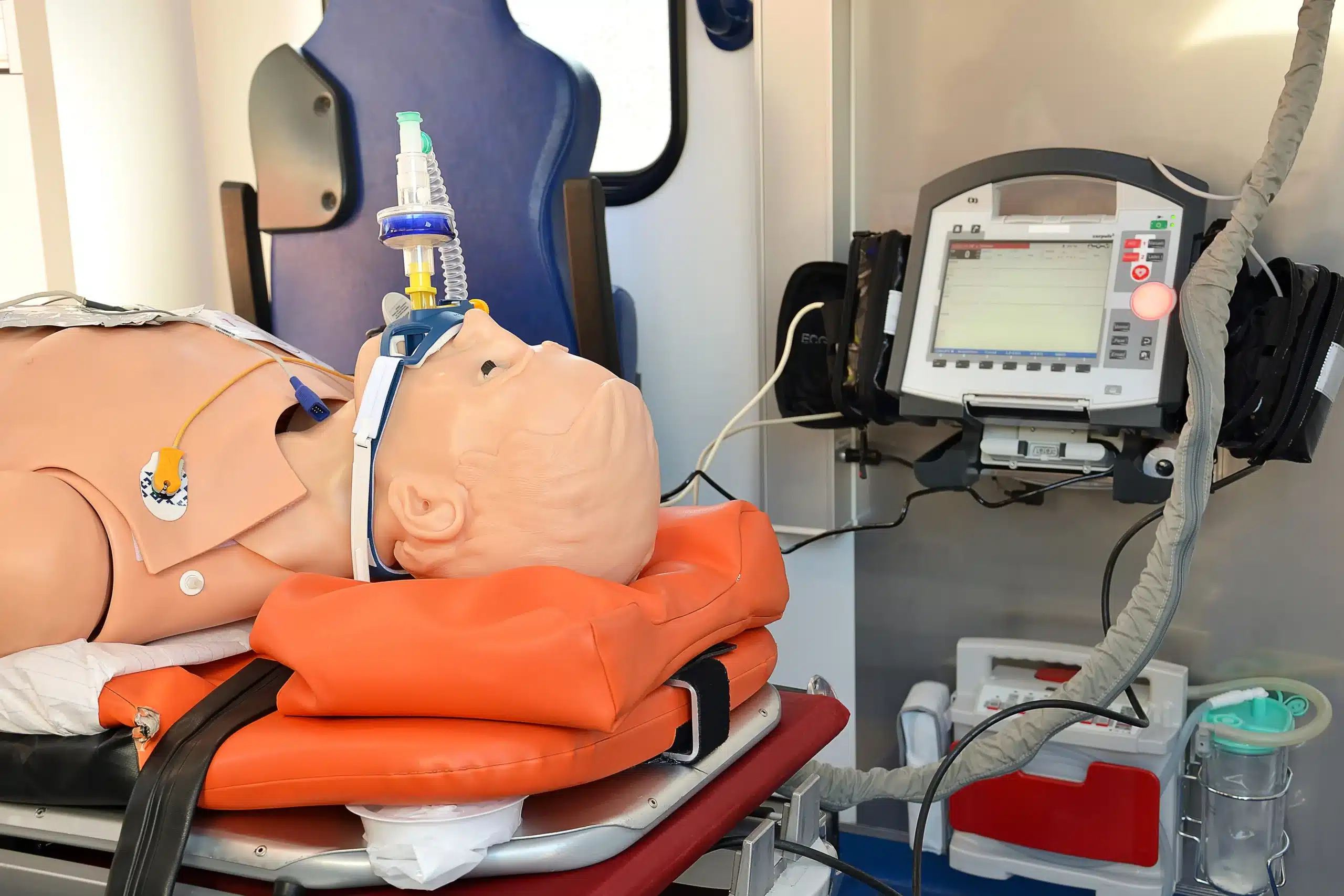Emergencies can strike at any moment in the workplace. From sudden cardiac arrests to minor injuries, knowing how to respond can make a significant difference. This blog post explores why CPR and first-aid training is crucial for every workplace, ensuring safety and preparedness for all employees.
The Immediate Impact of CPR Training
The ability to perform CPR can save lives. Cardiac arrests are among the leading causes of death globally. Quick intervention through CPR doubles or triples survival rates. In a workplace, having trained employees ready to act can mean the difference between life and death. Not every emergency occurs where medical professionals are immediately available. Thus, training employees ensures immediate action when seconds count.
Additionally, CPR training boosts confidence. Employees trained in CPR feel more empowered. They know how to handle emergencies, reducing panic. This assurance translates to a calmer, more effective response during actual incidents. Furthermore, regular refresher courses keep skills sharp, ensuring readiness at all times.
First-Aid Training as a Safety Net
First-aid training goes beyond CPR. It encompasses a wide range of skills. Employees learn to treat burns, cuts, and fractures. They can manage shock and sprains, ensuring minor injuries don’t escalate. This training is vital for maintaining a safe work environment. When employees know how to perform first-aid, they act swiftly. They address injuries immediately, preventing complications. This rapid response reduces downtime and fosters a safer workplace culture.
Furthermore, first-aid training promotes broader awareness. Employees recognize potential hazards and take preventive measures. This proactive approach minimizes the risk of accidents. A well-trained workforce is a safer workforce.
Legal and Ethical Responsibilities
Workplace safety is a legal requirement. Employers must provide a safe environment. CPR and first-aid training fulfill this obligation. Many jurisdictions mandate such training. Failure to comply can result in legal consequences. Besides legalities, there’s an ethical duty. Employers must protect their employees. Providing life-saving training is part of this responsibility. It shows commitment to employee welfare. Workers feel valued, knowing their safety is a priority. This sense of value enhances job satisfaction and morale.
Financial Benefits of Training
Investing in training saves money. Reducing workplace accidents lowers costs. It decreases insurance premiums and liability claims. Fewer accidents mean less downtime and higher productivity. Trained employees act swiftly, minimizing the severity of incidents. This quick response reduces the need for expensive medical interventions. Cost savings from training outweigh initial expenses.
Additionally, training enhances the company’s reputation. Businesses known for safety attract top talent. Candidates seek employers who prioritize their well-being. This competitive edge leads to a stronger workforce.
Building a Culture of Safety
Training fosters a culture of safety. It creates a mindset of preparedness. Employees are more vigilant and mindful of potential hazards. They take proactive steps to minimize risks. This culture extends beyond the workplace. Employees carry safety awareness into their communities. They become advocates for health and safety, spreading knowledge.
A safety-focused culture improves employee relationships. It encourages teamwork and collaboration. Employees look out for one another, fostering a supportive environment. This camaraderie enhances job satisfaction and retention.
How to Implement CPR and First-Aid Training
Start by assessing your current needs. Determine the specific risks within your workplace. This evaluation guides training priorities. Next, choose a reputable training provider. Look for organizations with certified instructors and comprehensive programs. Schedule regular training sessions for all employees. Ensure sessions accommodate different shifts and schedules.
Furthermore, encourage ongoing education. Offer refresher courses and advanced training. Keep employees’ skills updated and relevant. Recognize and reward participation. Acknowledge employees who complete training, reinforcing its importance.
Overcoming Common Training Challenges
Many workplaces face training challenges. Time constraints and budget limitations are common. To address these, integrate training into regular schedules. Consider online courses for flexibility and cost-effectiveness. Highlight the value of training to stakeholders. Demonstrate its benefits through case studies and statistics. Garner support from leadership and employees alike.
Additionally, set clear objectives for training. Define what success looks like and how it will be measured. This clarity ensures training aligns with organizational goals.
Real-Life Success Stories
Numerous companies have benefited from training. A manufacturing plant in Ohio reduced accidents by 40% after implementing first-aid courses. Employees felt more confident, leading to quicker responses. Another firm saw a dramatic improvement in employee morale. Workers appreciated the company’s investment in their safety.
These success stories illustrate training’s impact. They highlight the tangible benefits for employees and organizations. Real-life examples motivate others to invest in safety training.
The Role of Technology in Training
Technology enhances training efforts. Virtual reality (VR) offers immersive experiences. Employees practice CPR in realistic scenarios. This hands-on approach improves retention and engagement. Mobile apps provide accessible resources. Employees access training materials anytime, anywhere. These tools complement traditional training methods.
Online platforms offer interactive modules. Employees progress at their own pace, reinforcing learning. Technology makes training more flexible and effective.
Customizing Training for Your Workplace
Every workplace is unique. Tailor training to meet specific needs. Consider the nature of work and associated risks. Customization ensures relevance and effectiveness. Involve employees in the planning process. Gather their input on training content and format. This involvement fosters buy-in and engagement.
Evaluate training outcomes regularly. Use feedback to refine and improve programs. This continuous improvement cycle maximizes training benefits.
The Future of Workplace Safety Training
Workplace safety training continues to evolve. Emerging trends focus on inclusivity and accessibility. Training programs accommodate diverse learning styles. They consider language barriers and physical abilities. This inclusivity ensures all employees benefit from training.
Additionally, training emphasizes mental health. It addresses stress management and emotional resilience. A holistic approach enhances overall well-being.
Conclusion
Workplace CPR and first-aid training are indispensable. They save lives, reduce costs, and build a culture of safety. Employers have a legal and ethical duty to provide this training. With the right approach, training becomes a valuable asset. It empowers employees, enhances safety, and strengthens the organization’s reputation.
For more information on implementing effective training programs, contact us at Safety Training Seminars. Our experienced instructors and comprehensive courses can help your workplace thrive in safety and preparedness. Remember, investing in training today saves lives tomorrow.






